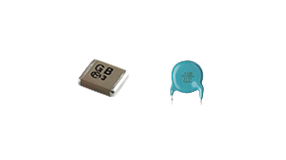Safety capacitors are a special and crucial component in electronic circuits, with strict standards and requirements for their definition, purpose, classification, and safety certification. The following is a detailed analysis of safety capacitors:

1、 Definition and purpose
Safety capacitor, also known as safety specification capacitor, is a capacitor that has been certified for safety and designed specifically to prevent electric shock and electromagnetic interference (EMI). It is mainly used for power filtering, electromagnetic compatibility (EMC), and personal safety protection, ensuring that electronic devices will not cause electric shock hazards to the human body under normal operation and abnormal conditions, while effectively suppressing electromagnetic interference and ensuring stable operation of the equipment.
2、 Classification and Characteristics
According to different application scenarios and safety levels, safety capacitors are mainly divided into the following categories:
X capacitor (X1/X2/X3):
Definition: Spanning between power lines (L-N) to suppress differential mode interference.
characteristic:
X1: Rated voltage ≤ 250VAC, resistant to transient overvoltage (such as lightning impulse).
X2: Rated voltage ≤ 250VAC/300VAC (different standards), resistant to transient overvoltage, widely used.
X3: Rated voltage ≤ 120VAC, weak ability to withstand transient overvoltage.
Y capacitor (Y1/Y2/Y3/Y4):
Definition: Spanning between the power line and ground (L-PE/N-PE) to suppress common mode interference.
characteristic:
Y1: Rated voltage ≤ 500VAC, resistant to high voltage impact, used between the primary side and ground.
Y2: Rated voltage ≤ 300VAC, resistant to high voltage impact, used between the secondary side and ground, most widely used.
Y3/Y4: Rated voltage ≤ 250VAC, weak resistance to high voltage impact.
In addition, safety capacitors can be divided into polyester film (PET) safety capacitors, polypropylene film (PP) safety capacitors, and ceramic safety capacitors according to the different dielectric materials, each with different characteristics and application scenarios.
3、 Safety certification and standards
Safety capacitors must pass strict safety certifications, such as UL (Underwriters Laboratories), ENEC (European Standard Electrical Certification), CQC (China Quality Certification Center), etc. These certification standards have strict requirements for the performance, safety, reliability, and other aspects of safety capacitors, ensuring their stable operation in various application scenarios and protecting personal and equipment safety.
4、 Difference from other capacitors
Compared with ordinary capacitors, safety capacitors have significant differences in safety, certification requirements, and application scenarios. Ordinary capacitors mainly focus on electrical performance, such as capacity, withstand voltage, loss, etc., while safety capacitors have added safety certification requirements on this basis to ensure that they will not cause harm to the human body during use. In addition, the application scenarios of safety capacitors are also more extensive, especially in fields involving personal safety and electromagnetic compatibility, such as household appliances, industrial equipment, power adapters, etc.
5、 Application scenarios and selection criteria
Safety capacitors are widely used in various electronic devices, such as switching power supplies, LED drivers, chargers, communication equipment, medical equipment, etc. When selecting, the following key parameters and factors need to be considered:
Rated voltage: It needs to be 1.25 times higher than the actual working voltage to ensure that the capacitor can still operate safely under abnormal conditions.
Capacity: Choose according to filtering requirements. If it is too large, it may increase costs, while if it is too small, it may affect the filtering effect.
ESR (Equivalent Series Resistance): High frequency circuits should choose models with lower ESR to reduce energy loss and heat generation.
Temperature range: Select the appropriate temperature range according to the application scenario to ensure that the capacitor can still operate stably in extreme environments.
Package size: Choose the appropriate package size based on the space of the circuit board to meet installation and heat dissipation requirements.
Safety certification: Ensure that the selected capacitor meets relevant safety certification standards, such as UL, ENEC, CQC, etc.
Through reasonable selection and application, safety capacitors can fully leverage their advantages in safety certification, high frequency, and high stability, providing strong guarantees for the stable operation of electronic devices and personal safety.
